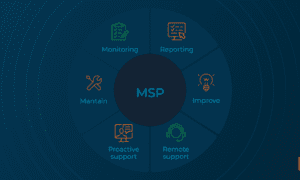Europe is entering a decade defined not by sudden disruptions, but by the quiet compounding of technological advantages. Artificial intelligence is no longer a frontier technology reserved for early adopters; it is rapidly becoming the operational backbone of companies that intend to survive the next economic cycle. What we are witnessing is the emergence of a structural divide, one that separates businesses able to integrate AI into their processes from those still relying on models built for a pre-algorithmic world. This divide is expanding faster than most policymakers, executives and legacy sectors are willing to admit. And by the time it becomes fully visible, the winners will already be years ahead.
Across the continent, the conversation around AI often focuses on ethics, risk, and regulatory frameworks. These debates are important, but they obscure the underlying reality: companies that adopt AI early are already pulling away at a speed that traditional organisations cannot match with human labour alone. AI is compressing operational timelines, reducing decision friction, and increasing the accuracy of everything from supply-chain forecasting to customer intent analysis. This is not about replacing jobs; it is about redesigning the economic logic of how companies operate. The organisations that recognise this are building new competitive moats. Those that do not are becoming increasingly exposed.
What makes this moment so defining is the unevenness of the transformation. AI is not entering every industry at the same pace, and even within sectors, adoption varies dramatically. Some businesses are quietly rebuilding their entire operational architecture around algorithms and predictive models. Others are still debating pilot programmes. The companies catching up are not just competing with their local rivals; they are competing with a new generation of businesses whose cost structures, decision-making speed, and market responsiveness are fundamentally different. By 2030, this divergence will be visible in revenue curves, productivity numbers and market concentration. Europe’s economic landscape will not simply evolve; it will reorganise.
Europe Is Entering Its Most Significant Technological Shift Since Broadband
Europe has experienced several major waves of technological transformation, from the spread of broadband in the early 2000s, to the rise of mobile ecosystems, to the more recent digitisation push driven by cloud infrastructure. None of these shifts carry the structural implications that AI introduces today. Broadband expanded access. Mobile redefined communication. Cloud lowered the cost of computing. But AI alters the foundational mechanics of value creation: how companies decide, respond, allocate, optimise and scale. It moves technology from being a tool to being a co-decision-maker. That is a fundamentally different level of impact.
One of the most under-discussed dynamics is the tempo mismatch between regulatory cycles and technological cycles. Europe’s regulatory tradition is slow, careful, and risk-focused. AI evolves on quarterly horizons. This creates an institutional drag that puts European companies at risk of operating under conditions where the technology available far outpaces the rules governing its use. Fast-moving companies are treating regulation as a framework, not a barrier, they are building compliant systems while simultaneously accelerating AI adoption internally. Slower organisations, however, often wait for complete clarity before acting, which effectively locks them into multi-year delays. In a decade defined by compounding advantages, these delays are existential.
The second dynamic is infrastructure asymmetry. While Europe has strong academic institutions and a solid base of engineering talent, access to large-scale compute, advanced AI models and high-quality proprietary datasets remains uneven. Western and Northern Europe are moving faster largely due to stronger cloud penetration and higher innovation investment. Southern and Eastern Europe are progressing at variable speeds, often depending on national priorities or the presence of international tech players. This uneven access is creating early clusters of AI-native sectors, where companies build competitive loops powered by data, feedback cycles and model retraining. These clusters will set the pace for the rest of the region.
The third dynamic is cultural. Many European businesses historically excelled through precision, quality and incremental innovation. AI rewards iteration speed, experimentation and willingness to rebuild processes from scratch. The companies embracing this new mindset, often mid-sized, less bureaucratic organisations, are shifting organisational DNA faster than the corporate giants expected to lead the transition. These firms are not merely “adopting tools”; they are reconstructing their operational identity around algorithmic decision flows. By contrast, companies that cling to legacy structures, manual processes or instinct-driven decision-making will find themselves structurally disadvantaged within a few years.
Why AI Is Creating Winners and Losers in Record Time
The accelerating divergence between successful and stagnant companies is not a matter of luck, industry, or even size. It is a direct consequence of how quickly organisations can convert data into operational leverage. AI compresses decision-making cycles from weeks to minutes, and optimises workflows that previously depended on layers of management, historical intuition or incomplete information. Companies that embrace this shift gain a structural speed advantage, allowing them to respond to demand changes, supply shocks or customer behaviour almost in real time. Over months and years, this speed compounds into a competitive position that traditional businesses cannot match, regardless of how well they executed under older market conditions.
Another factor driving the divide is the scalability of algorithmic systems. When a traditional business wants to grow, it typically requires more staff, more processes, larger teams and heavier oversight. An AI-enabled organisation scales through models that replicate decision patterns without needing proportional human expansion. This decouples growth from headcount and allows companies to operate with leaner structures while increasing throughput. The outcome is not simply efficiency; it is a new economic model where marginal costs decline as AI adoption increases. This shift benefits early adopters disproportionately, making the rich richer in operational terms.
AI also alters competitive dynamics by removing information asymmetry. In the past, companies with historical experience or entrenched market knowledge could rely on legacy advantages to outperform newer players. Today, even a recently launched business with strong AI infrastructure can process market signals faster, predict customer needs with greater accuracy, and adapt pricing strategies in hours rather than quarters. This levelling of the playing field punishes incumbents who assumed their experience alone was a moat. AI does not respect tradition; it rewards clarity, data, and speed. Organisations that underestimate this reality are realising that their competitors are no longer other long-standing firms, but younger, more agile entities operating on algorithmic foundations.
Finally, AI reshapes internal culture. Companies that adopt it effectively create environments where continuous improvement is normal, experimentation is encouraged, and decisions are guided by quantifiable patterns. Meanwhile, organisations slow to adapt tend to preserve hierarchical structures, manual approvals and risk-averse thinking. This cultural stagnation compounds the technical gap. Over time, the divergence becomes irreversible: one group builds momentum; the other defends processes designed for a different era. The result is a European market where the divide is not merely visible, it is widening with each fiscal quarter.
The Cost of Not Adopting AI: Europe’s “Silent Extinction” of Legacy Businesses
The most consequential impact of AI in Europe is not the rise of technologically advanced companies, but the quiet erosion of those failing to adapt. This is a “silent extinction” because it rarely makes headlines. Businesses do not collapse overnight; they slowly lose margins, relevance and operational stability until they are eventually absorbed, outmanoeuvred or replaced. This pattern is already visible in sectors previously considered stable: retail chains struggling with demand forecasting, logistics firms unable to match AI-enhanced routing competitors, and service organisations whose manual processes cannot keep pace with algorithmic efficiency. The death of these companies does not feel dramatic; it feels incremental, which makes the trend harder to recognise until it is too late.
Legacy businesses face structural handicaps that compound with time. Their operational systems were built for an era when manual oversight and incremental improvement were sufficient. AI changes the baseline expectations of customers, suppliers and partners. Faster responses become the norm. Transparent information becomes a requirement. Personalised recommendations become a competitive standard. When a legacy company fails to meet these expectations, the market rarely punishes it immediately, instead, it gradually migrates to alternatives that feel more intuitive and responsive. By the time leadership acknowledges the problem, the gap has already widened beyond the point of practical recovery.
The financial consequences are equally severe. Without AI-driven optimisation, legacy businesses operate with higher costs, slower turnaround times and reduced forecasting accuracy. These weaknesses may seem manageable during stable periods, but they become existential under stress: supply-chain disruptions, inflation cycles, talent shortages or sudden shifts in consumer behaviour. AI-enabled companies treat volatility as a dataset; traditional companies experience it as a threat. This asymmetric resilience means that downturns accelerate the extinction cycle. The businesses that were already behind fall further, while those with AI foundations strengthen their position.
There is also a psychological dimension. Leadership teams in legacy companies often underestimate how rapidly AI compounds advantages. They assume that gradual digitalisation, modest automation or periodic “innovation initiatives” are sufficient. But AI adoption is not a cosmetic upgrade; it requires rethinking how value is created internally. Companies unwilling to redesign processes, organisational structures or decision flows eventually face a strategic paralysis. They move too slowly to catch up, yet too cautiously to reinvent themselves. The result is decline disguised as stability, until the market exposes the gap.
Europe’s challenge is that this extinction is happening beneath the surface. Many businesses that appear operational today are already years behind AI-driven competitors in cost efficiency, logistics, personalisation, compliance automation or data governance. Without intervention, thousands of them will not disappear in dramatic fashion; they will simply fade from relevance, quietly outpaced by companies built for a world where intelligence, not labour; is the primary driver of scale.
Case Study Cluster: How Different European Regions Are Using AI
Europe’s AI landscape is often described as fragmented, but this fragmentation is not a weakness; it is a reflection of how differently regions absorb technological change. Each part of the continent has developed its own approach to automation, data governance, digital infrastructure and algorithmic decision-making. Looking at individual companies in isolation only tells part of the story. When grouped by region, clear patterns emerge, patterns that reveal where innovation accelerates, where legacy systems dominate, and where the next wave of competitive advantage is already forming. This regional lens shows a continent that is not uniformly advancing, but evolving in a series of interconnected clusters, each contributing to Europe’s overall AI trajectory.
Northern Europe: Fintech Precision, Autonomous Mobility and Data-Led Retail
Northern Europe has built one of the most disciplined and data-centric ecosystems on the continent. The region blends high digital trust with a strong engineering culture, producing companies that treat AI not as an experiment but as a structural component of operations.
Klarna has become a benchmark in AI-driven fraud detection and real-time credit risk modelling. Its machine learning systems not only evaluate behavioural micro-patterns to improve customer approval accuracy, but have also been strategically deployed to achieve a significant AI-driven staff reduction, demonstrating efficiency beyond risk management.
Bolt uses AI to dynamically optimise logistics across ride-hailing and delivery. Its models adjust to traffic density, driver supply, weather fluctuations and user demand in milliseconds, compressing inefficiencies that legacy mobility platforms still treat as unavoidable.
Spotify, headquartered in Stockholm, exemplifies algorithmic personalisation at scale. Its recommendation engines interpret listening behaviour across billions of data points, generating predictive models that shape user engagement and content discovery.
Wolt, operating widely across the Nordics, relies on AI to streamline last-mile delivery. Its routing algorithms calculate the optimal paths for couriers while balancing preparation times, restaurant load, local congestion and demand spikes.
Northern Europe’s strength lies in its cultural alignment with automation: rapid adoption, low bureaucracy, and an instinctive belief that data should drive operational design.
Western Europe: Algorithmic Supply Chains, Mobility Intelligence and Enterprise AI
Western Europe approaches AI from the perspective of scale and industrial complexity. The region’s corporate giants deploy machine learning in high-stakes environments where precision, resilience and regulatory compliance are essential.
Airbus integrates AI into structural testing, sensor calibration, predictive maintenance and safety modelling. Its systems analyse hundreds of parameters from aircraft telemetry to detect patterns that pre-empt mechanical issues long before they become operational risks.
Delivery Hero uses AI to orchestrate food delivery networks across multiple geographies. Its demand forecasting models anticipate order spikes, optimise driver allocation and streamline interactions between restaurants, riders and customers.
Renault Group applies AI to manufacturing automation, supply-chain synchronisation and autonomous mobility research. Machine learning tools improve defect detection, model production bottlenecks and accelerate the development of next-generation vehicle systems.
Just Eat Takeaway relies on AI to coordinate millions of deliveries daily. Predictive models analyse prep times, courier availability, historical patterns and neighbourhood-level demand to reduce delays and improve consistency across multiple markets.
Western Europe’s advantage lies in the scale of its operational environments, AI becomes the engine that keeps complex systems stable, agile, and economically viable.
Central Europe: E-Commerce Acceleration, AI Retail, Digital Entertainment and Regulated E-Retail
Central Europe is emerging as one of the most dynamic and diverse AI hubs in the region. While often underestimated, it blends strong engineering capability with fast-moving commercial adoption across retail, logistics, entertainment and regulated digital services.
Allegro the region’s largest marketplace, relies on AI for search relevance, behavioural ranking and real-time product personalisation. Its algorithms refine recommendations continuously, creating discovery experiences shaped by billions of individual user interactions.
InPost has transformed parcel logistics across Europe with predictive routing, automated locker networks and machine-learning systems that anticipate volume peaks, delivery patterns and regional fluctuations in customer demand.
Żabka Group operates one of Europe’s most advanced AI-driven retail ecosystems. Its autonomous checkout stores, behavioural analytics, dynamic planograms and real-time inventory modelling make it a showcase of algorithmic retail at scale.
CD Projekt Red, known globally for The Witcher and Cyberpunk 2077, demonstrates AI’s impact in entertainment technology. AI accelerates environment creation, automates asset pipelines, enhances QA through anomaly detection and supports procedural world-building, positioning the studio as one of Europe’s most technologically sophisticated creative companies.
Olmed, operating within regulated pharmacy e-retail, demonstrates how AI reinforces sectors where accuracy, data transparency and fulfilment predictability are non-negotiable. Through machine-learning models, Olmed’s platform improves product search relevance, strengthens information clarity and supports operational reliability in an environment governed by stringent pharmaceutical compliance standards.
Central Europe’s strength comes from diversity: retail, logistics, gaming and regulated commerce evolve side by side, forming a highly adaptive AI corridor.
Eastern Europe: High-Intensity Innovation Under Constraint
Eastern Europe develops AI under conditions that reward speed, adaptability and resourcefulness. The region’s innovation is shaped by limited infrastructure, geopolitical pressure and a culture of rapid iteration.
Reface AI (Ukraine) is known worldwide for its generative AI capabilities in video and face-swapping technologies, demonstrating the region’s strengths in computer vision and deep learning.
Grammarly, founded by Ukrainian engineers, uses advanced NLP models to analyse linguistic intent, clarity and tone across billions of text inputs. It is one of the world’s most sophisticated language-AI companies.
Preply, also rooted in Ukraine, uses AI to match learners with tutors and personalise learning pathways. Its models analyse engagement patterns to optimise educational outcomes at a global scale.
N-iX provides AI engineering capabilities across industries, building predictive systems, vision models and algorithmic solutions for enterprises worldwide.
Eastern Europe excels in domains where agility matters more than infrastructure, it moves quickly, innovates under pressure and adopts AI as a necessity rather than an optional upgrade.
Southern Europe: AI for Tourism, Mobility and Government Digitalisation
Southern Europe applies AI to stabilise sectors shaped by seasonality, mobility flows and administrative complexity.
Glovo (Spain) relies on AI for delivery routing, courier allocation, ETA prediction and demand forecasting across dense urban environments. Its models learn from millions of micro-events in real time.
Telefónica uses AI to enhance network optimisation, cybersecurity and 5G orchestration. Machine learning systems balance traffic loads, detect anomalies and predict service disruptions before they occur.
Leonardo S.p.A. (Italy) integrates AI into aerospace design, defence systems, simulation environments and mission-critical analytics, making it one of Southern Europe’s most advanced industrial innovators.
Euronet Greece applies AI to fraud detection, ATM network intelligence and secure financial processing in a region heavily reliant on cross-border transactions and seasonal economic flows.
Southern Europe shows how AI modernises industries that face unpredictable demand and high regulatory oversight.
The Baltic Region: Europe’s Quiet Engine of Digital Governance and Fintech
The Baltics consistently outperform their scale. Their digital-first mindset and high consumer trust make them one of Europe’s most fertile environments for AI-led transformation.
Estonia’s e-Residency ecosystem operates on decentralised data layers supported by AI-driven validation, automation and security protocols. It remains a global benchmark for digital governance.
Wise (formerly TransferWise) uses AI to manage cross-border money flows, detect fraud anomalies and optimise currency exchange operations.
Revolut, while multinational, runs a major part of its Baltic operations through AI-driven risk analysis, KYC processes and transaction modelling.
Vinted (Lithuania) uses AI to moderate listings, detect prohibited content, optimise search and personalise product feeds for millions of users.
The Baltics prove how a region with limited population can build world-class digital systems by prioritising automation and trust over bureaucracy.
What Regulated Industries Tell Us About the Pace of AI Adoption
Regulated industries often act as a diagnostic tool for understanding whether AI adoption is entering a phase of genuine structural change. These sectors, from financial services to healthcare to e-pharmacy, operate under some of the strictest compliance requirements in Europe. They cannot rely on improvisation, cultural enthusiasm or early-stage experimentation. Their adoption curve reveals a deeper truth: once AI becomes reliable enough for industries where precision, traceability and auditability are mandatory, it has moved beyond hype and entered the realm of operational infrastructure.
In fintech, AI already governs decision-making processes that once required entire departments. Machine-learning systems assess credit risk, monitor fraud patterns, verify identities and detect anomalies across millions of transactions in real time. These tools reduce uncertainty in a sector where errors carry legal, reputational and systemic consequences. The shift is not about enhancing convenience; it is about increasing the reliability of the financial system itself. When institutions begin replacing manual oversight with algorithmic assurance, the adoption threshold has fundamentally changed.
The health-tech environment demonstrates AI’s capacity to handle sensitive, high-stakes information under tight regulatory scrutiny. Diagnostic tools use pattern recognition to augment clinical decisions. Scheduling systems predict patient flows and resource allocation. Hospital logistics platforms rely on AI to optimise procurement, reduce waste and anticipate shortages. In each case, the technology’s role is confined not by its potential, but by the regulatory perimeter defining how it may operate. The fact that health-tech companies increasingly deploy these systems at scale shows that AI has reached a level of maturity compatible with safety-critical contexts.
Within e-pharmacy and pharmacy e-retail, AI adoption is slower but equally revealing. Companies such as Olmed, operating in a pharmaceutical environment defined by strict information standards, use machine-learning models to enhance product search accuracy, organise regulated data consistently and support fulfilment processes where reliability is essential. These systems do not aim to disrupt healthcare, they aim to stabilise processes where errors are unacceptable. When AI proves effective in these tightly controlled domains, it signals a broader trend: the technology is no longer optional. It has become a prerequisite for maintaining competitive parity in any sector where compliance, transparency and precision matter.
The Operational Playbook: How AI Changes Search, Logistics, Support and Product Discovery
AI is rewriting the operational mechanics of modern companies in ways that are subtle, cumulative and structurally transformative. Search, logistics, customer support and product discovery, four pillars that once relied on manual calibration, are now dominated by systems that learn continuously from behavioural and operational data.
Search has shifted from static keyword-based matching to dynamic intent modelling. Machine-learning algorithms analyse context, behaviour and semantic relationships between products to deliver results that feel personalised even when users provide minimal input. This reinforces discovery loops where relevance improves with every interaction, creating a compounding advantage for companies that adopt these systems early.
Logistics has moved from batch planning to real-time optimisation. AI interprets location data, route constraints, delivery patterns, seasonal fluctuations and micro-delays to generate routing decisions that exceed human planning capacity. These systems do not eliminate variability, they reshape it. As a result, companies can operate with leaner fleets, lower error margins and greater predictability, which translates directly into cost efficiency and customer satisfaction.
Customer support is increasingly defined by triage algorithms, intent classifiers and predictive resolution systems. AI identifies issue patterns, assigns cases to the right agents, pre-fills responses, and resolves recurring problems autonomously. The goal is not simply to reduce headcount; it is to remove friction from interactions that previously consumed disproportionate operational resources. Support becomes a scalable service rather than a bottleneck.
Product discovery now depends on algorithmic personalisation. Companies aggregate behavioural signals, browsing patterns, purchase histories, session duration, geographic trends, to shape recommendations that respond to real-time changes in demand. This accelerates revenue cycles by matching products to users with a precision impossible under manual curation. In sectors with large catalogues, AI becomes the only viable method of delivering relevant selection at scale.
Together, these operational shifts redefine company architecture. AI is no longer an enhancement; it is the system that determines how modern businesses sense, interpret and respond to market signals.
Why 2030 Will Be a Divide Between AI-Native and AI-Phobic Companies
The next decade will not be defined by incremental improvements. It will be defined by a structural divergence between organisations that internalise AI as a core operational principle and those that continue to treat it as an optional add-on. By 2030, the gap will not be theoretical; it will be visible in revenue concentration, productivity metrics and market consolidation.
AI-native companies redesign their internal logic around automation, prediction and rapid iteration. Their decision cycles shorten, their operational errors decline, and their ability to scale becomes independent of workforce expansion. They build data feedback loops that strengthen their models with every interaction, transforming day-to-day operations into continuous optimisation processes. These organisations do not “use AI”; they are architected around it.
AI-phobic companies, often older businesses with deep legacy systems, follow a different trajectory. Their operations remain anchored in manual oversight, slow approvals and instinct-driven planning. They may introduce isolated AI tools, but they do not restructure the systems necessary to capture compounding benefits. As competitors automate, these companies face widening cost gaps, slower recovery from disruptions and an inability to match the speed of algorithmic decision-making. Their decline is predictable, even when their financials appear stable in the short term.
This divergence is accelerated by the economics of AI. Algorithmic systems create declining marginal costs and expanding operational leverage. Companies that adopt them early gain compounding returns; companies that hesitate face compounding penalties. The outcome is a market where a minority of AI-native organisations capture a disproportionate share of demand, leaving the rest to compete for shrinking residual markets.
By 2030, the question will not be which companies adopted AI, most will. The defining distinction will be which organisations rebuilt their operational architecture around it, and which simply applied AI as a cosmetic layer over outdated systems. The former will scale. The latter will quietly disappear.
Europe’s Path Forward: What Policymakers and Founders Need to Get Right
Europe’s ability to compete in an AI-driven world will depend on decisions made not over the next decade, but over the next few years. The continent’s regulatory strength, a long-standing advantage in consumer protection, data privacy and ethical governance, must now be paired with a level of technological ambition that matches global competitors. Policymakers need to recognise that regulation is not merely a guardrail; it can be an instrument for building trust in systems that increasingly automate decisions previously made by people. The challenge is to strike a balance that protects citizens without obstructing the pace at which companies must innovate to remain viable.
A critical priority is infrastructure parity. There is a growing divide between countries with abundant access to compute, cloud capacity and high-quality datasets, and those that rely on outdated or fragmented systems. Without coordinated investment in pan-European AI infrastructure, smaller markets will struggle to keep pace, producing pockets of progress rather than a unified competitive bloc. Europe requires a foundation where startups, SMEs and regulated industries alike can access the computational resources that underpin modern innovation, without facing prohibitive costs or bureaucratic delays.
Founders play an equally central role. Europe’s startup culture has traditionally leaned towards caution, prioritising stable growth over rapid iteration. AI demands the opposite. The companies that succeed will be those willing to rebuild internal processes, adopt experimental cycles and challenge long-standing operational dogmas. Founders must be comfortable with architectures that evolve continuously and business models built on algorithmic learning rather than static assumptions. The future will reward organisations that experiment decisively, adopt modular systems and view AI not as a cost, but as a force multiplier.
Finally, collaboration between public and private sectors will determine the speed of continental progress. AI touches everything, healthcare, finance, energy, mobility, defence, logistics, education. No single institution can manage this alone. Europe must build frameworks where governments, regulators, corporates and startups can share standards, datasets and best practices without collapsing into competitive silos. The continent’s advantage has always been its ability to align diverse markets under shared principles. Replicating that coherence in the age of AI is essential if Europe wants to define, rather than follow, the next global technological era.
Conclusion: Adapt or Die, But Preferably Adapt Fast
The coming decade will expose a truth that many organisations still underestimate: AI is not a technological trend but an operational restructuring of the global economy. Companies that recognise this shift early will not simply outperform their competitors, they will operate on a fundamentally different plane of efficiency, predictability and scale. Those that hesitate will spend the next years watching their cost structures rise, their decision cycles slow and their strategic options narrow. Decline, in this context, is not dramatic. It is incremental, silent and entirely avoidable.
Adaptation is no longer a matter of strategic preference; it is a precondition for survival. AI rewards companies that build fast feedback loops, redesign internal systems and allow algorithms to take over processes that humans cannot manage at scale. The organisations that thrive will be those that treat AI as infrastructure, not as a side project. They will understand that the competitive game has shifted from intuition to intelligence, from manual oversight to automated optimisation, and from experience-based planning to real-time decision systems.
The companies that resist this transformation may not collapse immediately, but they will fade from relevance. Markets rarely punish slowness instantly, they punish it cumulatively. By the time the gap becomes visible, the distance is already too large to close. The divide between AI-native and AI-phobic companies will define Europe’s economic landscape by 2030, and it will determine which sectors grow, which consolidate and which disappear.
The message is simple: adapt decisively, adapt intelligently, and above all, adapt now. The organisations that treat AI as a structural priority will set the direction of Europe’s next economic chapter. Those that do not will be remembered only as the businesses that ran out of time.



































